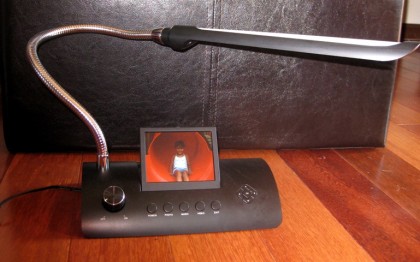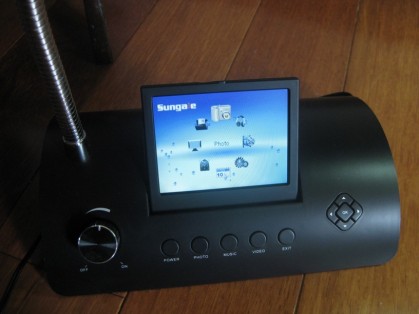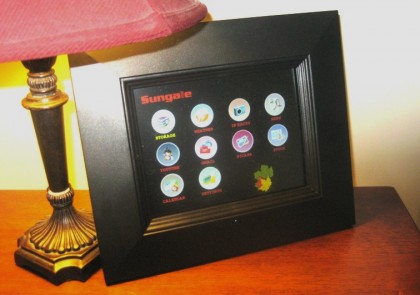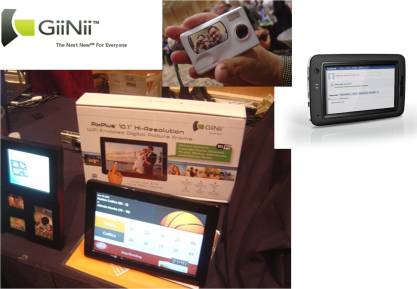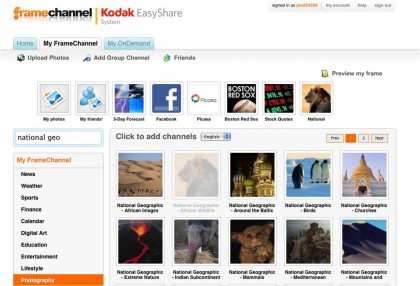In my continuing quest to find meaningful evolution in the digital photo frame space, I stumbled upon the Sungale desk lamp with photo and video display. Not long ago I reviewed a Sungale touch-screen frame, and came away hoping for more. But the desk lamp is a different story. The photos are sharp on the 3.5″ screen, video is surprisingly crisp and easy to upload, and the device even plays any MP3 files you’ve got. My one hesitation here is that the lamp retails for $100 ($90 at Amazon). It’s probably not an unreasonable price, but I still find it hard to justify in my own budget as someone who would normally spend about $15 for a desk light. If your price range is higher, however, you should definitely give the Sungale lamp a whirl. It’s a lot of fun and would be a good gadget gift for the office worker.
First off, this desk lamp doesn’t disappoint in its primary function. The light is bright, soft, and easily flexes in any direction. It’s also energy efficient, consuming only 5W of power.
Getting beyond the lighting function, the lamp has a little pop-up LCD screen that resides in the base. As a photo frame, it’s a bit small, but remarkably clear. The screen gets 320×240 resolution, and the lamp has 512 MB of built-in memory. You can also plug in your camera’s memory card (SD, MMC, MS), or connect to a computer via USB. Transporting photos was easy. My PC opened up a dialog box asking if I wanted to connect using the “program provided on the device.” The software isn’t flashy, but it’s perfectly serviceable, and settings on the lamp allowed me to control the slide-show display.
